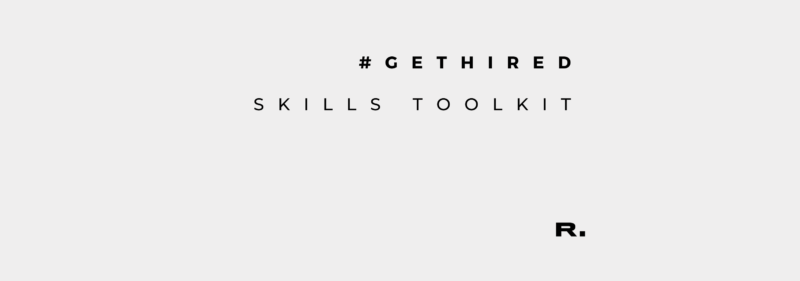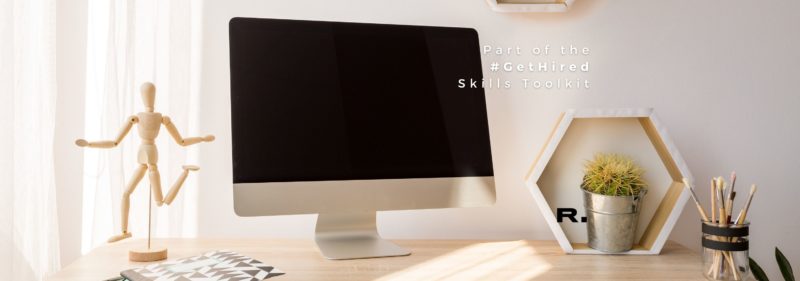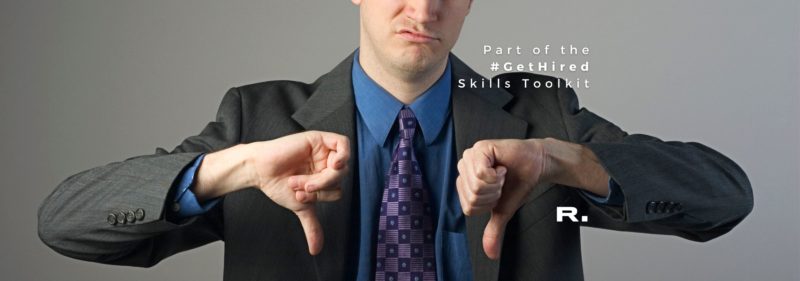4 million people were hired through LinkedIn in 2019 and with nearly 700 million users. And that number is set to rise. Basically, if you’re not on LinkedIn already – you should be.
LinkedIn is a fantastic tool that allows you to connect with employers (you’ll definitely find RecruitmentJunky on LinkedIn!). You can also develop a supportive network to flag up opportunities, and build a community of like minded professionals to support you through the job seeking process.
So how do you do it? If you’re starting from scratch, head to LinkedIn to build your profile. This is essentially a living document or a three dimensional CV that can be accessed 24/7. It’s a huge opportunity to build your personal brand as a means to attract a new employer and track your professional milestones.
When building out your profile, these should be your key considerations;
Profile photo
LinkedIn reports that profiles with a picture receive 21x more views and 9x more connection requests. That kind of engagement is more likely to land you a new position. It’s a healthy reminder you’re a real flesh and blood human not just a digital profile floating in the ether (or even a fake profile).
Do you have a professional headshot you could use? Great! If you don’t, don’t worry. Essentially, the photo needs to be clear, good quality and has to look like you. Smiling is definitely allowed.
Photos of the back of your head looking over a mountain, hugging your 3 kids or a distant picture of you at a wedding holding a pint might be arty/ cute/ relatable. But they aren’t going to help anyone recognise you if you were to meet in real life. Using filters and photos of you 15 years younger are also generally a no.
Like all things, first impressions count so you want your photo to reflect the type of brand you want to promote – that could mean suit and tie for some. For others, they prefer a relaxed vibe with a smile.
If you’re just starting out, think about how you’d want to look at a networking event. Probably professional, approachable and friendly. You’re not trying to reinvent the wheel here, set up a camera on a timer or ask a friend. Think head and shoulders in the frame and smile!
Headline
The tagline is an opportunity to condense what you do and your key achievements in a single easy to digest summary. This is one of the most viewed parts of your profile. It shows up every time you appear in a search or engage with someone else’s post. Think of it as free advertising.
Again, this is building your own personal brand. You might want to approach it in different ways by getting creative and injecting some of your personality. We’d advise you steer clear of referring to yourself as a ‘Ninja’ ‘Rockstar’ or ‘Guru’ which are popular with some… But let’s face it, when someone’s after a B2C marketing specialist they’re not searching for a ‘Marketing Wizard’.
We’d suggest utilising the space to get specific and showcase some of your key achievements. For example;
- Instead of Sales Exec you could be ‘B2B Sales Rep | £1.4M revenue generated in 2019’
- Rather than Digital Marketer try ‘PPC Specialist | 5 years experience managing 7-figure ad budgets’
- Instead of Tech Support put ‘Tech support officer | Helped over 15k with cloud storage in Q1’
Summary
Think of this as your blurb to your novel. It’s not often it’s all about YOU so make it count. Say who you are, what you do and the skills you’ve acquired over the course of your career. Write it in first person ‘I am an experienced XYZ’ rather than ‘Andrew is…” it’s more relatable and direct.
If writing about yourself doesn’t come naturally to you (and you’re already cringing) start by writing a list of your key skills, experiences and your proudest achievements. Extra points for including stats, facts and solid numbers to evidence your statements.
Once you have a list you’re happy with, broaden these out into a few paragraphs. You don’t have to write chapter and verse, short and sweet will often suffice. Feel free to spice it up with bullet points, emojis and amusing anecdotes if that supports your personal brand – remember this is a window into who you are as a person.
Work and academic history
Think traditional CV with an upgrade – and make sure if you’re going to be using both (which you likely are) make sure your details and dates match. If the company you’ve worked for has a LinkedIn page it will flag up and a logo will appear on your profile. It’s not obligatory but adding more details in here can add real value. A succinct description of the role and what it comprises is an opportunity to demonstrate your skills, particularly if you can evidence it by putting numbers to your achievements.
If you rose through a number of roles within a business – great that shows progression. Make sure that’s included by separating the roles out and listing the responsibilities and achievements under each role.
When it comes to filling out the education section, college or university might immediately spring to mind but don’t forget any additional business or distance courses you’ve done throughout your career. Including these shows professional development is important – a highly valued quality by hiring managers. Additionally, make sure to include any applicable volunteering roles as it not only demonstrates your interests outside work but other skills you’ve gained.
Endorsements and Recommendations
Adding skills to your profile is an easy way to show your skill set at a glance. You can include up to 50 skills on your profile and these can then be endorsed by your network in just one click. There’s no way to request endorsements but if you take a moment to endorse the people you know personally ex-colleagues, partners, customers and friends, they’re likely to return the favour.
Recommendations are written endorsements of people’s experiences of working with you directly. This acts as a reference further evidencing your skills, experience and professionalism. Your network can provide you with recommendations without being prompted, or you can request them.
#OpenToWork
LinkedIn has a great feature that allows you to identify yourself as open to new work opportunities. You can do this privately – so just recruiters can see, or publicly where a green frame is applied to your profile photo. This is an easy and effective way to highlight when you’re looking for a new opportunity. You can also identify the kinds of roles you’re open to.
If you’re currently out of work, having the #OpenToWork frame will increase your chances of being seen. The LinkedIn community is known for being especially supportive in difficult times such as these when there are so many out of work. Of course, applying the green banner to your profile is a personal choice, but it’s one that will be received with support and more often than not, your connections will look to help you where they can.
Completing your LinkedIn profile with as much detail as possible can really add value to your job search. Start building out your network with people you know, then strategically add people and follow companies you’d like to work with. Stay up with industry news, engage with people’s posts and create your own content to spark conversations – you never know where they’ll lead!
Ready to take the next step? View the next chapter in our #GetHired Skills Toolkit.
Other Reads

2 Minute Read 08.12.20
Why you should build routine into your job hunt
Found yourself out of work for the first time in a long time? We’ve launched the #GetHired Skills ...

2 Minute Read 08.12.20
Creating a good workspace for your job hunt
Found yourself out of work for the first time in a long time? We’ve launched the #GetHired Skills ...

1 Minute Read 08.12.20
What to do when you find yourself out of work
Firstly, don’t panic! You are not alone, nor the first or the last person to find themselves out o...